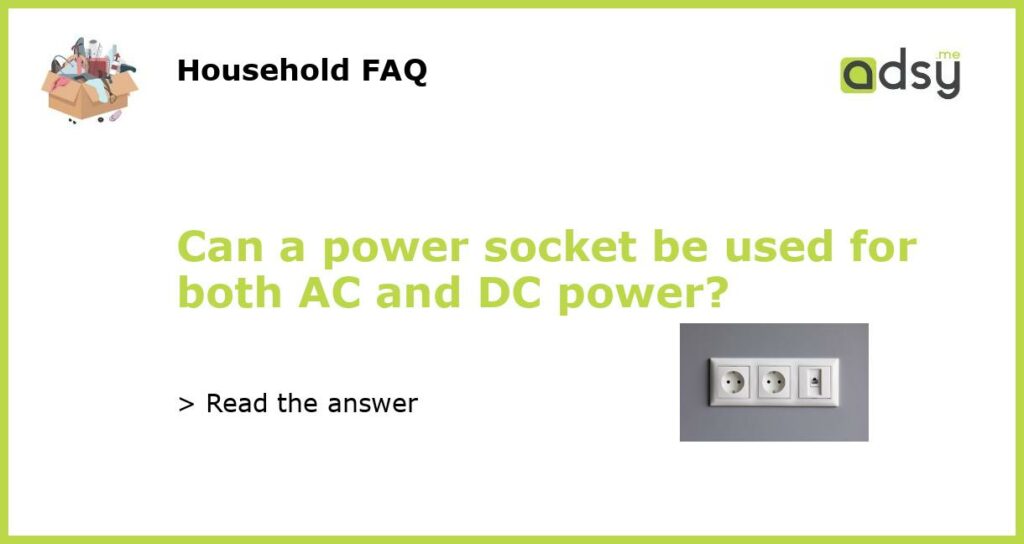Yes, a Power Socket can be Used for both AC and DC Power
Power sockets, commonly referred to as electrical outlets, are designed to provide electricity to various devices. These devices can use either Alternating Current (AC) or Direct Current (DC) power. While the vast majority of household appliances and electronics run on AC power, there are some devices that require DC power. The good news is that with the right equipment, a power socket can be used to provide both AC and DC power.
Understanding the Difference Between AC and DC Power
Before diving into how a power socket can be used for both AC and DC power, it’s important to briefly understand the difference between the two. AC power is the most common form of electrical power used in homes and businesses. It alternates in direction, constantly changing from positive to negative, and is supplied by the power grid. On the other hand, DC power flows in one direction, remaining constantly positive or negative. While AC power is used for household appliances like refrigerators, televisions, and computers, many smaller devices like smartphones, tablets, and laptops run on DC power.
Using an Adapter to Convert Power
To utilize a power socket for both AC and DC power, an adapter or converter is necessary. An adapter typically converts AC power to DC power, allowing devices that require DC power to be plugged into a standard power socket. This is commonly seen with chargers for smartphones, laptops, and other portable devices. These chargers convert the AC power from the wall outlet to DC power suitable for the specific device. Without an adapter, these devices wouldn’t be able to be charged from a power socket.
The Importance of Voltage and Polarity
It’s essential to consider the voltage and polarity requirements of the device when using a power socket for both AC and DC power. AC power typically provides a constant voltage level, such as 110V or 220V, depending on the country. In contrast, DC power requires a specific voltage level, often indicated on the device or charger. Using a power socket with an adapter that supplies the correct voltage is crucial to prevent damage to the device. Additionally, the polarity, which refers to the direction of electrical flow, must be matched correctly. Many DC devices have polarity indicators to ensure proper connection.
In summary, a power socket can be used for both AC and DC power with the use of an appropriate adapter. AC power is the most common form of power used in homes and businesses, while DC power is required for certain devices. By using an adapter, AC power can be converted to DC power to charge or power devices that require DC power. It’s important to pay attention to the voltage and polarity requirements of the device to ensure proper and safe operation. With the right equipment and understanding, a power socket can efficiently provide both AC and DC power.






